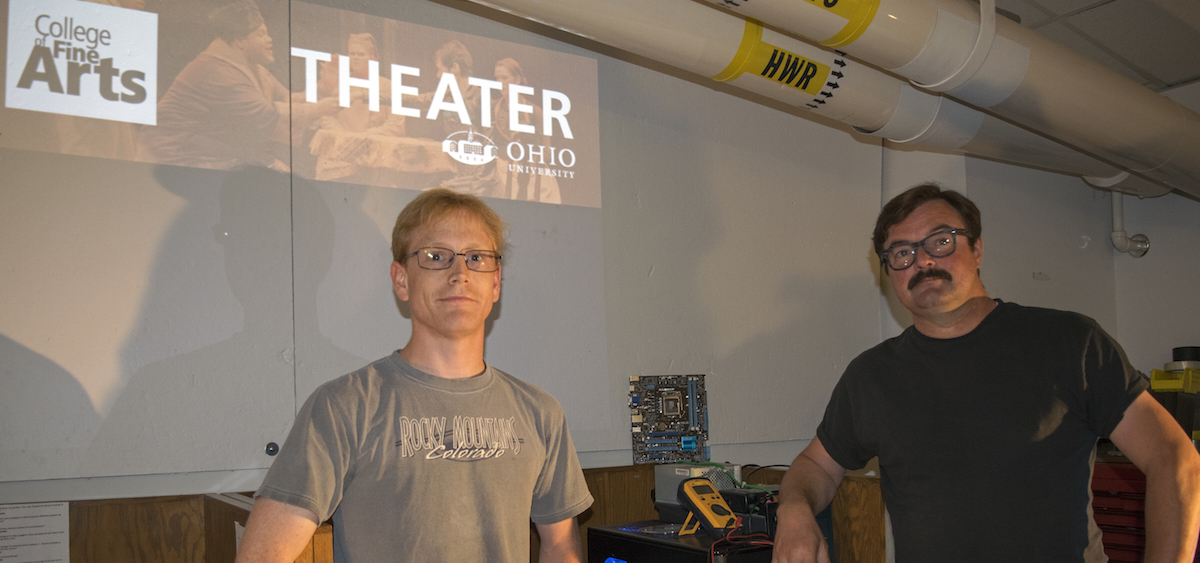Culture

Grant Awarded for New OU Theater Projectors
< < Back toThe Theater Division at Ohio University will receive new theatrical projectors—plus a state-of-the-art software package—as part of an 1804 Fund grant.
Lowell Jacobs’ successful proposal requested three industrial-grade projectors, along with a sophisticated software package and new media server (aka “control computer”). Jacobs, who co-wrote the proposal with MFA student Nathan Davis, was excited about the possibilities represented by the grant.
“I was floored,” Jacobs said, of receiving the news. “Very flattered.”
The 1804 Fund, which supports projects that enhance a learning-centered community, was established by the Ohio University Foundation and endowed by a gift from the estate of alumnus Paul C. Stocker. Jacobs submitted a “joint” proposal, meaning it would apply to both of the 1804 Fund’s categories: “Undergraduate Learning” and “Faculty Research and Graduate Studies.”
Jacobs and Davis said one of the major shifts in theatrical design over the past decade has been the increasing importance of projections and “digital scenography.” Modern technology allows designers to create scenic elements digitally, including complex effects such as rain falling on the stage.
“It’s no longer your Kodak projector on the back of a stage,” Davis said. “It’s now moving clouds, a sunrise, a flashback.”
In researching the proposal, the pair surveyed several programs at peer institutions across the country and also reached out to industry professionals, including engineers, for equipment recommendations.
One of the specific benefits to the new projectors, made by Panasonic, is that their modern design allows for them to be positioned in all different directions (even inverted). That along with Dataton’s “WATCHOUT” software, will result is the ability to create immersive environments.
“Anything you can dream up,” Jacobs said.
The upgraded system also will be more environmentally friendly, since the practice involves less wood waste, Davis added.
A training and certification program for the software was also included in the proposal. Jacobs said they hope for the equipment to arrive on campus sometime near the beginning of the Fall Semester.
Jacobs said the technology should serve as an incentive for prospective students, since it will allow students access to a greater variety of employment in the theater and entertainment markets. Jacobs said plans are underway to incorporate the projectors into existing classes, and he added that benefits would extend throughout the School of Dance, Film, and Theater.
Jacobs, a master electrician, runs Ohio University’s Sound Design Program. An Ohio University alumnus, he earned an MFA in Performance and Technology from Arizona State University. Davis is currently working on his MFA in production design with an emphasis in sound and projections design.

